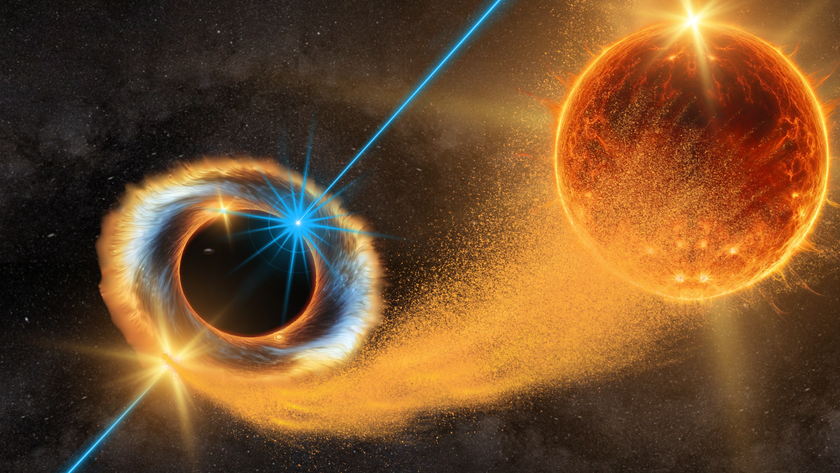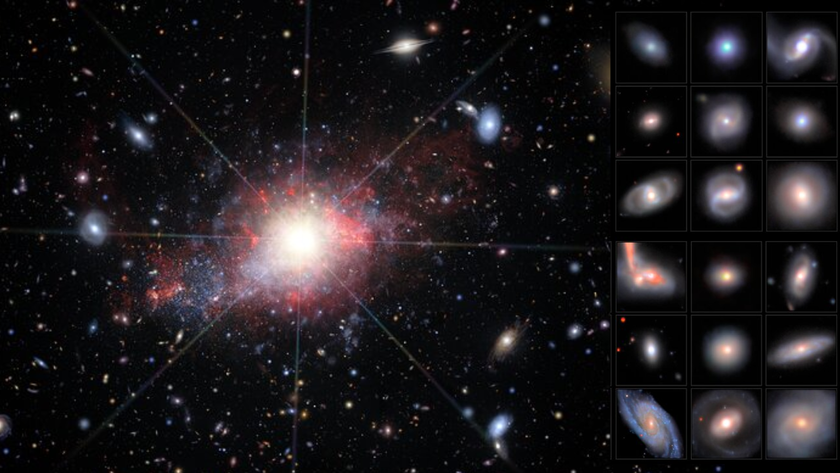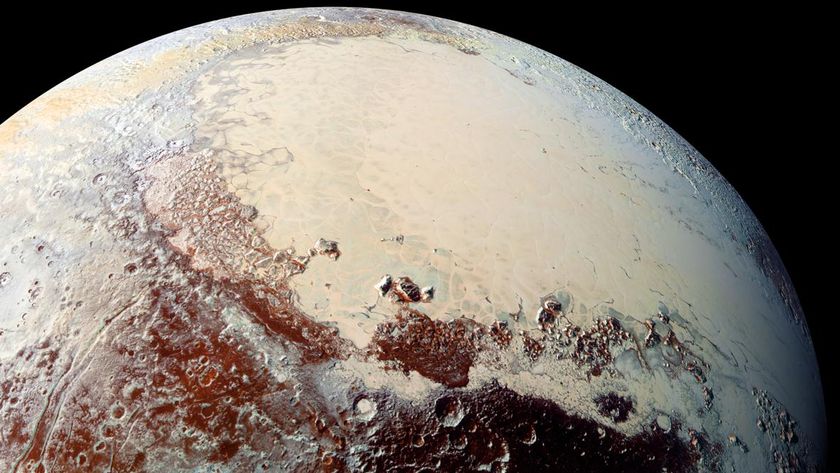Moonshine Glow: See Pluto's Moon Charon as a Crescent in NASA Photo
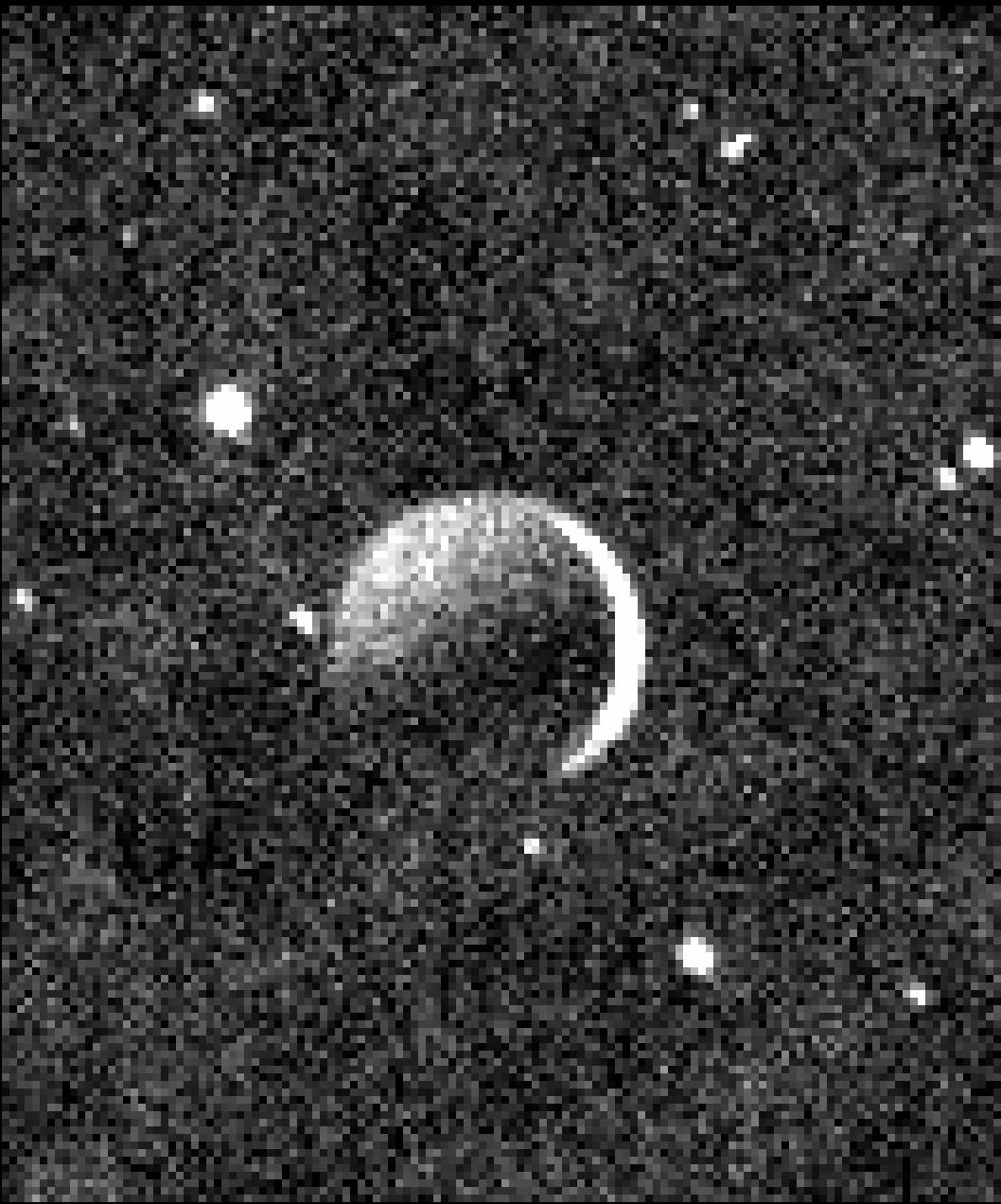
NASA's New Horizons spacecraft keeps showing us things we've never seen before.
The probe's latest jaw-dropping photo is simultaneously familiar and exotic: Pluto's largest moon, Charon, in crescent phase. Sunlight shines on a sliver of Charon, while the bulk of the moon's night side is lit faintly by reflected "Plutoshine," NASA officials said.
Though NASA released the photo Thursday (Jan. 19), New Horizons snapped it on July 15, 2015, just after the spacecraft's epic close flyby of Pluto. The probe was about 100,000 miles (160,000 kilometers) from the dwarf planet when it took the picture with its Ralph/Multispectral Visible Imaging Camera, NASA officials said. (New Horizons got as close as 7,800 miles, or 12,550 km, to Pluto's surface on July 14, 2015.) [Check out more amazing Pluto photos]
Pluto has five moons. Charon is by far the largest; with a diameter of 750 miles (1,200 km), the satellite is more than half as wide as Pluto itself. (Technically, Pluto and Charon constitute a binary system, because the two bodies' center of mass lies outside Pluto.)
Also on Thursday, NASA released a global color map of Pluto made using three images captured by the Ralph camera during New Horizons' flyby.
"The mosaic shows how Pluto's large-scale color patterns extend beyond the hemisphere facing New Horizons at closest approach, which were imaged at the highest resolution," NASA officials wrote in an image description Thursday.
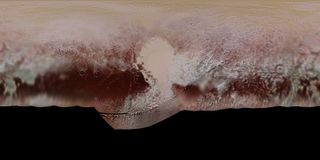
Though the Pluto flyby occurred 18 months ago, New Horizons' work is far from done. The spacecraft is currently zooming toward a Jan. 1, 2019, close encounter with another frigid, distant body: a small object known as 2014 MU69, which lies about 1 billion miles (1.6 billion km) beyond Pluto's orbit.
Get the Space.com Newsletter
Breaking space news, the latest updates on rocket launches, skywatching events and more!
At the moment, New Horizons is about 3.6 billion miles (5.8 billion km) from Earth, and about 410 million miles (660 million km) beyond Pluto, according to the mission's position tracker.
Follow Mike Wall on Twitter @michaeldwall and Google+. Follow us @Spacedotcom, Facebook or Google+. Originally published on Space.com.
Join our Space Forums to keep talking space on the latest missions, night sky and more! And if you have a news tip, correction or comment, let us know at: community@space.com.

Michael Wall is a Senior Space Writer with Space.com and joined the team in 2010. He primarily covers exoplanets, spaceflight and military space, but has been known to dabble in the space art beat. His book about the search for alien life, "Out There," was published on Nov. 13, 2018. Before becoming a science writer, Michael worked as a herpetologist and wildlife biologist. He has a Ph.D. in evolutionary biology from the University of Sydney, Australia, a bachelor's degree from the University of Arizona, and a graduate certificate in science writing from the University of California, Santa Cruz. To find out what his latest project is, you can follow Michael on Twitter.
Most Popular



